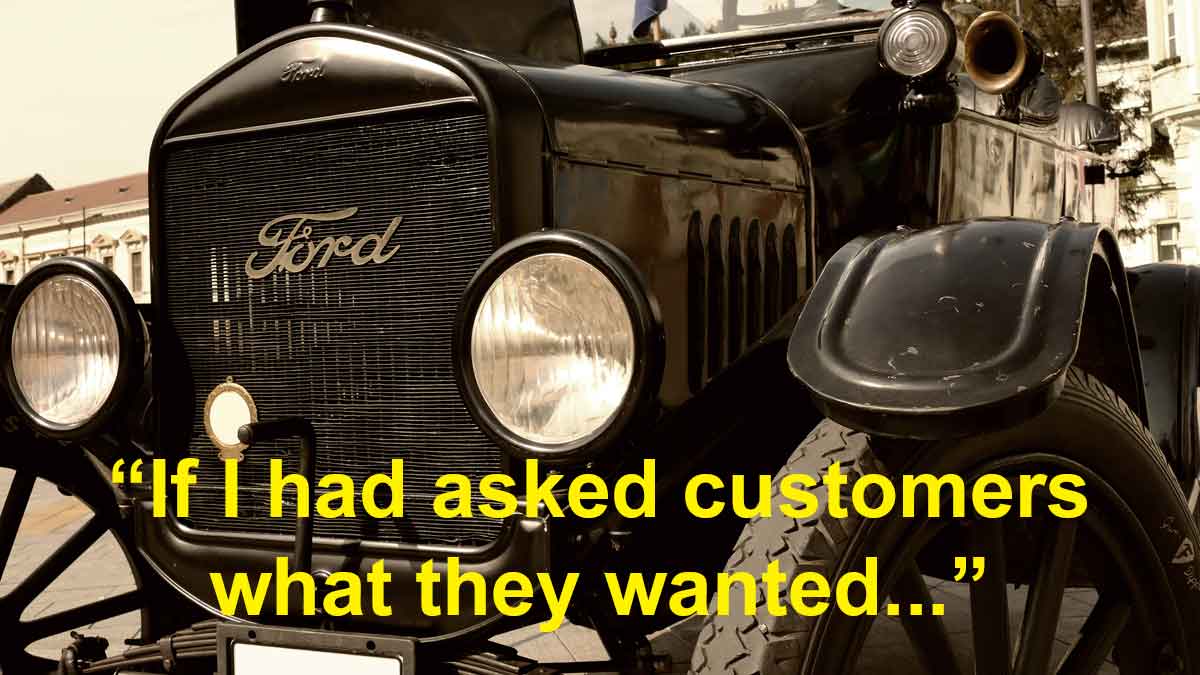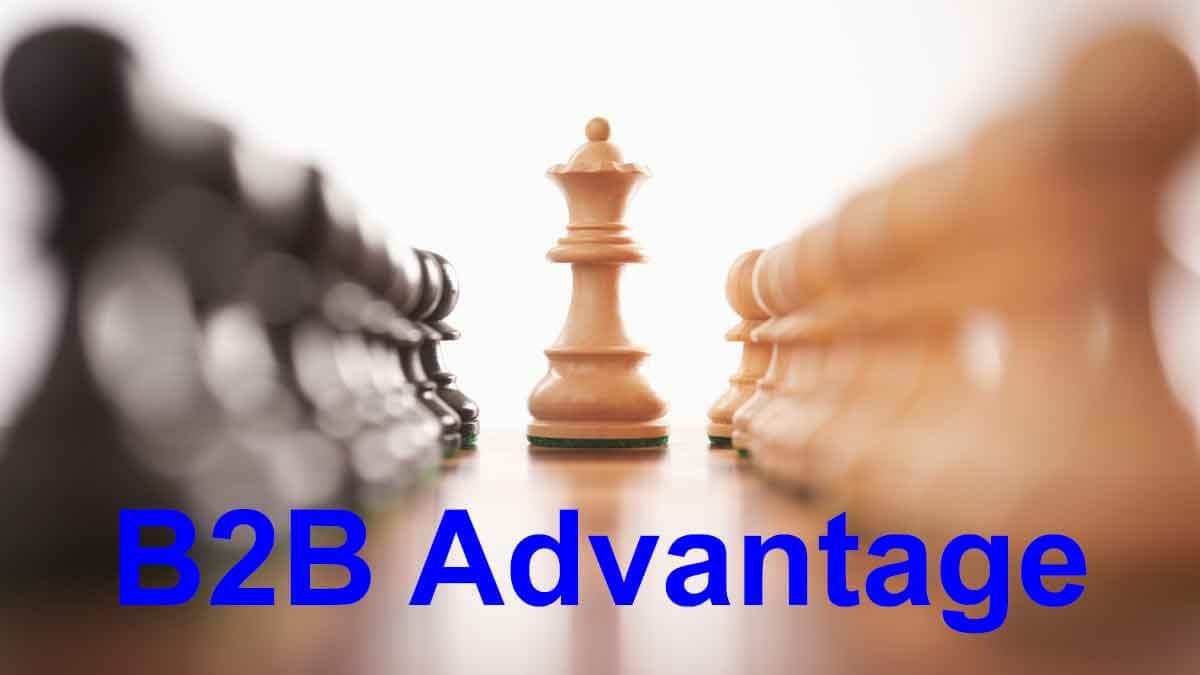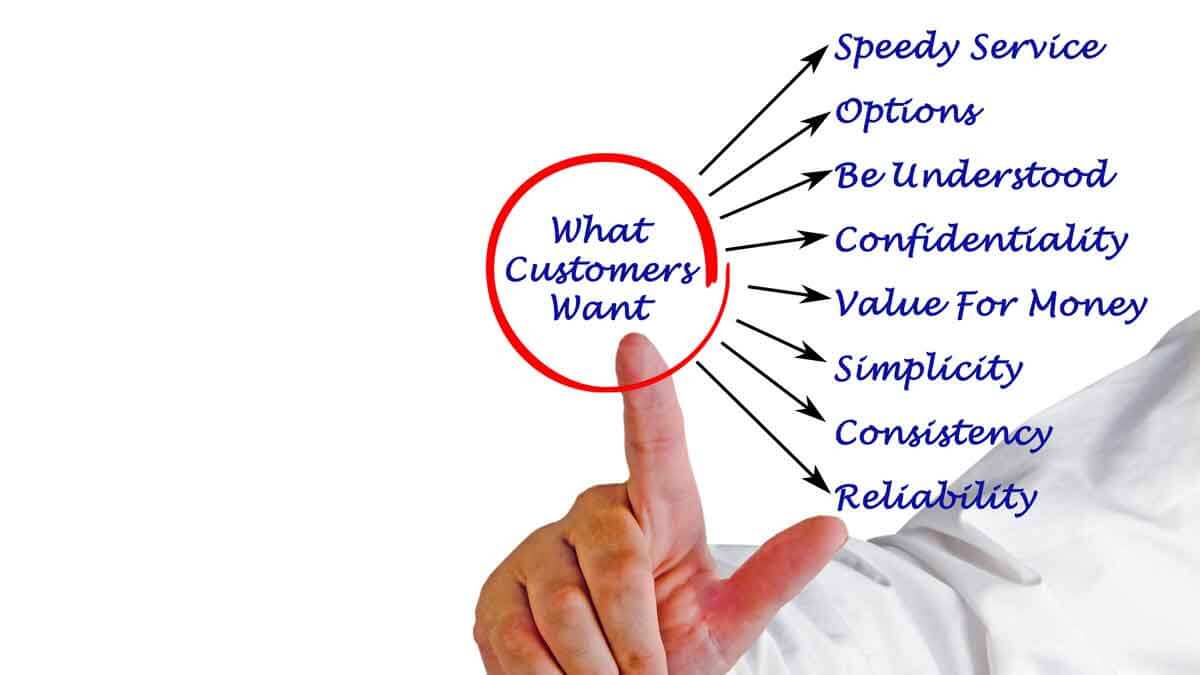The “Build-Measure-Learn” cycle in Lean Startup begins with a hypothesis, and is great for B2C. End-consumers can seldom tell you what will amuse them or increase their sense of self-worth. But knowledgeable B2B customer can predict their desired outcomes. So start with a “Learn” pre-step. Customers will tell you all you need if you know how to ask.
More in white paper, Lean Startup for B2B (page 3).
Consider three product development stages: front-end, development and launch. Most projects reach commercial certainty in the launch phase, as sales are monitored. But you can move this certainty to the front-end. Nearly all commercial uncertainty can be eliminated before development using the science of B2B customer insight.
More in white paper, Timing is Everything (page 6).
B2B companies have huge advantages over B2C, but they may not be obvious. After all, didn’t the same fellow who bought a rail car of soda ash also buy a can of soda pop? Nope. He changed… a lot. B2B customers are more technically savvy, objective, supplier-dependent, and can predict their needs. Careful reflection of these differences leads to different approaches.
More in article, B2B Customer Interviews: Are They Different?
Steve Jobs quoted Henry Ford, who said, “If I had asked people what they wanted, they would have said faster horses.’” But these men were end-consumers themselves, so they understood their markets. Most B2B suppliers, typically have much to learn about customer desired outcomes… and B2B customers are willing and able to tell them.
More in article, Should You Develop New Products like Steve Jobs? (Originally published in B2B Organic Growth Newsletter).
B2C companies seek to understand customer needs. B2B companies should do this and engage customers, priming them to buy later. If you interview ten customers that represent 20% or 50% of the market segment’s buying power, wouldn’t it be an incredible waste if you failed to engage these companies… so they wanted to work with you?
More in article, The Missing Objective in B2B VOC (Originally published in B2B Organic Growth Newsletter).
Here’s the “B2B Advantage”: Your customers can offer more insight than end-consumers due to their knowledge, interest, objectivity and foresight. But if your company uses hand-me-down consumer goods voice-of-customer methods, you’ve ignored your own advantage. Your competitors may not.
More in white paper, Catch the Innovation Wave (page 7).
You can ask for pricing decisions using a survey, e.g. Van Westendorp. But it’s hard to get a straight answer in concentrated B2B markets: They know they’ll be negotiating prices later. Better to understand the customer’s world so well you can create a value calculator… to model their pricing decision-making. You’ll have longer-lasting insights vs. a one-time survey.
More in article, Pricing New vs. Existing Products (Originally published in B2B Organic Growth Newsletter).
If you were gathering customer insights about belts, would you rather interview someone using a belt to convey iron ore… or to hold up their pants? B2B customers can usually provide more insight than end-consumers due to greater knowledge, interest, objectivity and foresight. But these advantages are no advantage unless you use a B2B-optimized approach.
More in white paper, Catch the Innovation Wave (page 6).
Unlike many B2C benefits, e.g. amusement, comfort, and self-esteem, B2B customer benefits are usually measurable, economic and—wait for it now—predictable. This predictability means B2B suppliers who study customer outcomes, like a science, will be handsomely rewarded. B2B customers will eagerly help you… if you know how to ask them.
More in article, The Science behind Great Value Propositions (Originally published in B2B Organic Growth Newsletter).
If the customer felt they helped you with your interview, you probably wasted your airfare. But if they felt it was their interview, asked for a copy of the notes, and said you were a good meeting facilitator… you probably learned things your competitors don’t know. B2B insight skills are needed for this. Do your people have them?
More in e-book, Reinventing VOC for B2B (page 9).
Research shows customer engagement is critical to successful innovation. This engagement increases as you move through six “insight levels”: 1) Deciding what customers want in your conference rooms, 2) polling your sales force, 3) conducting customer surveys, 4) qualitative VOC, 5) quantitative VOC, and 6) B2B-optimized VOC. Where are you?
More in article, Boosting Innovation…In One Easy Lesson (Originally published in B2B Organic Growth Newsletter).
Clever companies realize they’ll “hear what they want to hear” without quantitative VOC. To do it right, B2B companies should weight responses based on customer buying power. And don’t just ask for importance ratings: Ask for satisfaction ratings as well. The only hope for premium pricing is pursuing needs that are both important and unsatisfied.
More in article, Constraints to Organic Growth
Traditional VOC relies on questionnaires, tape recorders and post-interview analyses. That’s fine for B2C, but your B2B customers are insightful, rational, interested and fewer in number. They’re smart and will make you smarter if you engage them in a peer-to-peer fashion, take notes with a digital projector, skillfully probe, and let them lead you.
More in executive briefing, Seven Mistakes that Stunt Organic Growth.
Many suppliers unwittingly detach from customers with a host of risky behaviors: 1) Asking customers to fill in boring questionnaires, 2) using interviews to “validate” their preconceived solutions, 3) failing to probe with insightful questions, and 4) neglecting to follow-up interviews with rich, ongoing engagement. Is it time to learn customer-engagement skills?
More in article, 5 Growth Risks You Can Stop Taking (Originally published in B2B Organic Growth Newsletter).













